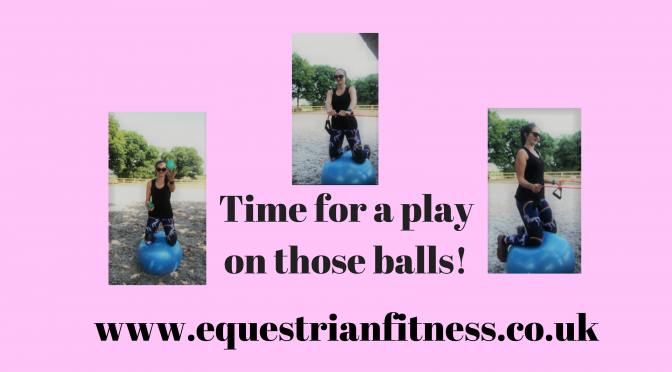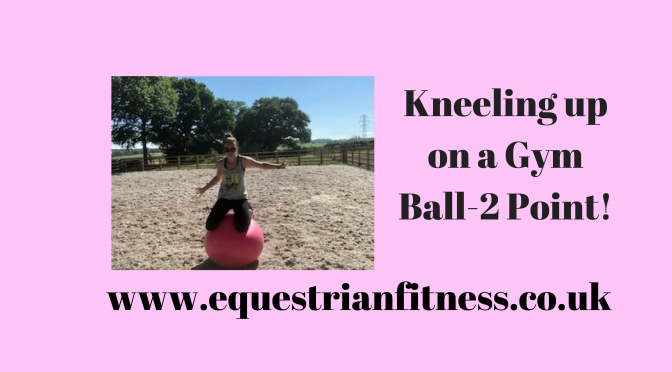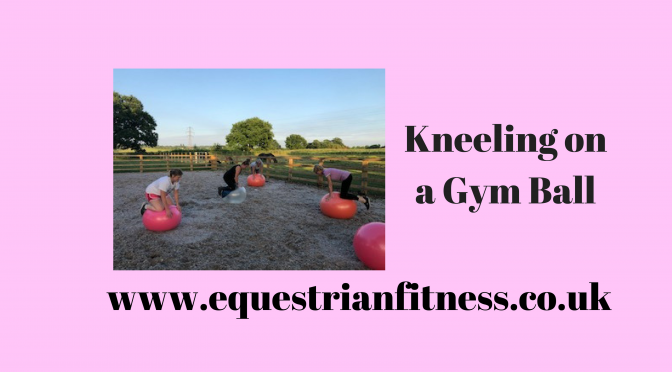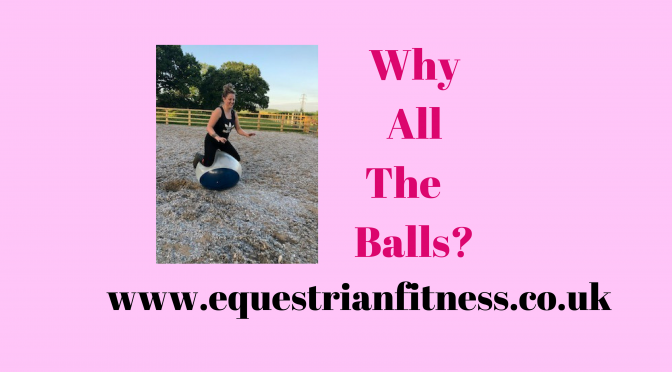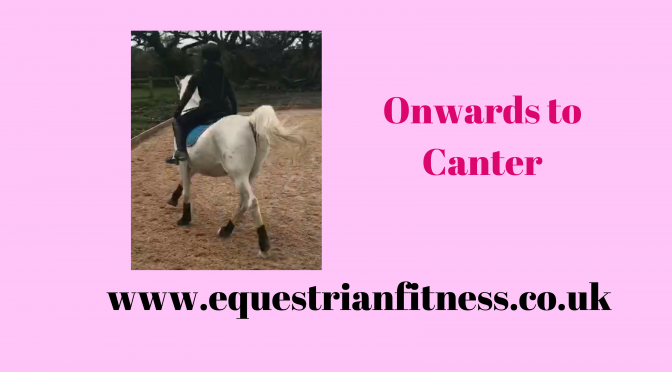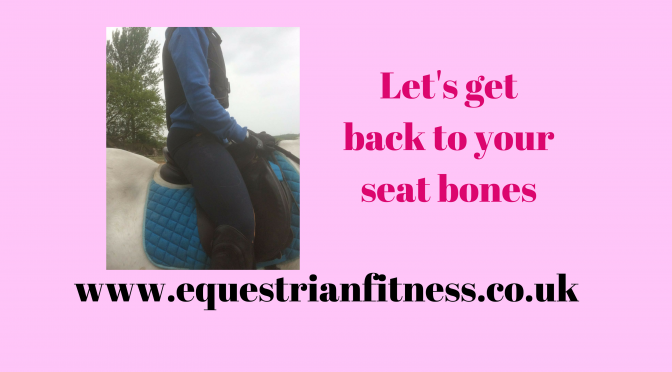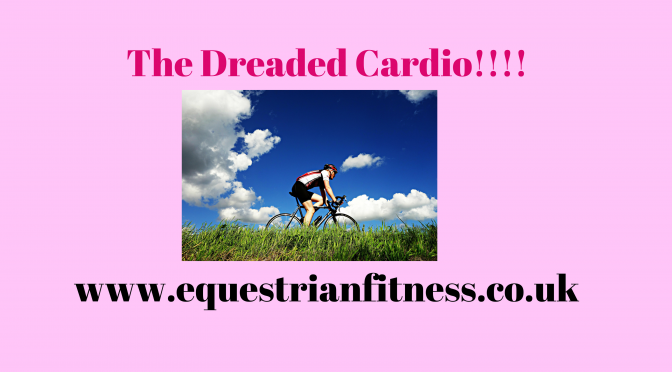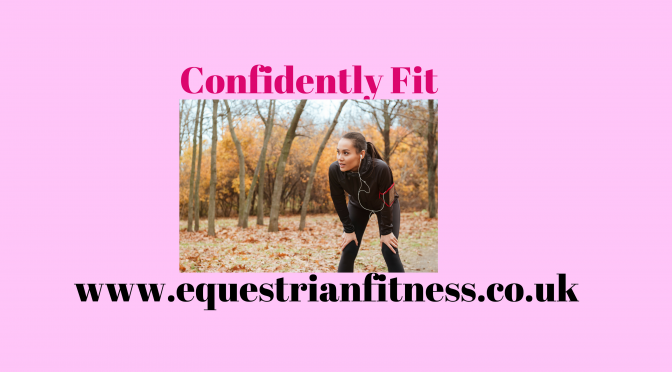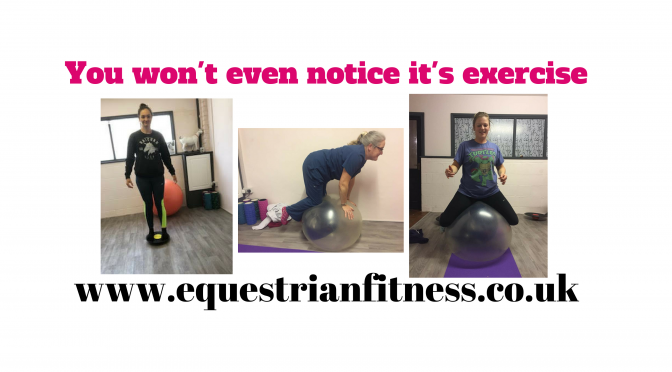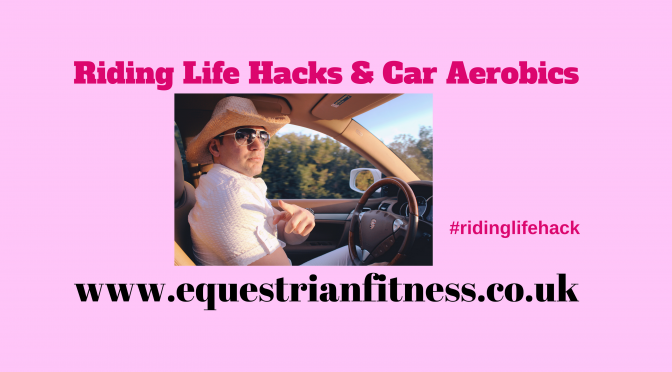We’ve been talking about Fitness for Equestrians generally for the past couple of weeks in relation to improving your control over your body and how this improves your performance and potentially then your confidence.
It’s been mentioned but we haven’t properly discussed the dreaded……….cardio!!!
I reckon you are either a seasoned runner or you avoid anything heart raising altogether (well maybe not everything…..).
The thing is cardio fitness has some great benefits for riders.
Such as.
- Not being red faced and out of breath at the end of every round!
- Better ability to ride consistently well from start to finish in your lessons or schooling sessions -or is it just my instructor that goes all boot Camp!
- Feeling less tired
- Maintaining better body control
- Maintaining mental awareness
Many of this comes down to your heart being able to pump blood around your body more effectively as your heart will be stronger, and also because you will be more likely to breathe consistently and therefore take in adequate oxygen to power your muscles and brain.
There is no need to be scared though as the amount and type of cardio you need to depends very much on your chosen discipline. Although I will explain in a minute how this is not as clear cut but it is a good guideline.
Certain disciplines require endurance and steady state fitness
- Endurance/general hacking
- Dressage
- Showing/equitation/schooling
- Racing
Others require short interval fitness.
And some disciplines require both.
The thing is how you gain that fitness is entirely up to you. When people ask me the best exercise to do to get fit I often answer “the one that you will stick to”. As in reality this is true, you see if I said for example it was running, but you hate running then you might go a couple of times then decide not to bother again because you didn’t enjoy it. However if you really like cycling or going to a dance class then this most likely to have an impact on your fitness because you will actually keep doing it!
Now if you want to be disciple specific and you are a show jumper then I am sure you are aware that your round will usually be a fast, short burst of energy and then it’s all done. This would tie in well with interval training as this works on the same principle. Something like Tabata intervals which is 20 secs works 10 secs rest x 8 doing whatever you like whether that be running, rowing or burpees would be a really simple and quick way to up your cardio fitness. However you just bear in mind if you have several horses to compete you may need some endurance in their too, but a few sessions of intervals per week regularly should give you enough gas in the tank to manage.
Now the endurance sports I listed can be a little less clear cut, as in reality unless you are doing proper endurance riding some interval training will probably be enough to improve your fitness and therefore performance as you aren’t actually training for a marathon.
So dressage, schooling etc. If you would prefer short and sharp then go for it, but if you have a cross country round or aforementioned endurance trek then you are going to have to put some steady miles in too.
Again how you do these is entirely up to you. If you like running, off you go, but you could also swim, cycle, row, use the cross trainer -there are pros and cons to all of them so it really is whichever one you will actually do!
If you are not a serious competitor and just want to stop being out of breath in your half hour lesson, then some brisk walking with the dog will still go a long way to helping.
I will reiterate the message though; the best way to improve your cardio fitness for riding is to pick an activity that raises your heart rate, that you enjoy doing and fits into your life so that you will do it consistently.

